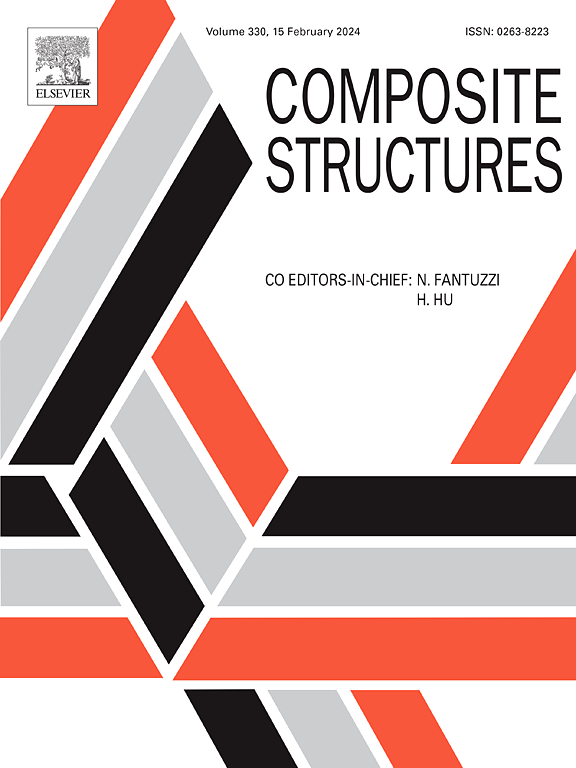全尺寸风电叶片双轴疲劳试验系统多体动态传递矩阵建模与验证
IF 6.3
2区 材料科学
Q1 MATERIALS SCIENCE, COMPOSITES
引用次数: 0
摘要
风力涡轮机技术的不断进步,在追求更大的发电量和更大的叶片尺寸的驱动下,提高了对全尺寸叶片可靠的双轴疲劳测试的需求。这种测试对于评估实际荷载条件下的长期结构完整性至关重要。本研究提出了一种新的多体动态传递矩阵方法,以解决大型风力涡轮机叶片全尺寸双轴测试系统固有的建模和分析挑战。该方法将非均匀叶片结构离散为梁单元,并利用传递矩阵理论推导出包含梁空间动力学、质量分布、阻尼特性和弹性特性的系统矩阵。该方法通过系统地建立动力传递方程和随后的特征方程数值解,实现了对多体试验系统的全面振动分析。通过有限元模拟和实验测量的对比验证表明,等效模型在多种叶片配置下的预测误差低于7%。该框架为研究叶片疲劳试验系统的振动特性和弯矩分布提供了有效的多体传递矩阵模型,为全尺寸双轴疲劳试验平台的动态表征和优化设计奠定了理论基础。本文章由计算机程序翻译,如有差异,请以英文原文为准。
Multi-body dynamic transfer matrix modeling and validation for full-scale wind turbine blades in biaxial fatigue testing systems
Continuous advancements in wind turbine technology, driven by the pursuit of increased power generation and extended blade dimensions, have heightened the demand for reliable biaxial fatigue testing of full-scale blades. Such testing is critical for evaluating long-term structural integrity under realistic loading conditions. This study presents a novel multi-body dynamic transfer matrix methodology to address the modeling and analysis challenges inherent in full-scale biaxial testing systems for large wind turbine blades. The proposed approach discretizes the heterogeneous blade structure into beam elements and employs transfer matrix theory to derive system matrices encompassing spatial beam dynamics, mass distribution, damping characteristics, and elastic properties. Through the systematic formulation of the dynamic transfer equations and subsequent numerical solutions of the characteristic equations, this method enables comprehensive vibration analysis of the multi-body test system. Comparative validation through finite element simulations and experimental measurements demonstrates that the equivalent model achieves prediction discrepancies below 7% across multiple blade configurations. The developed framework provides an effective multibody transfer matrix model for investigating vibration characteristics and bending moment distributions in blade fatigue testing systems, establishing theoretical foundations for dynamic characterization and optimized design of full-scale biaxial fatigue testing platforms.
求助全文
通过发布文献求助,成功后即可免费获取论文全文。
去求助
来源期刊

Composite Structures
工程技术-材料科学:复合
CiteScore
12.00
自引率
12.70%
发文量
1246
审稿时长
78 days
期刊介绍:
The past few decades have seen outstanding advances in the use of composite materials in structural applications. There can be little doubt that, within engineering circles, composites have revolutionised traditional design concepts and made possible an unparalleled range of new and exciting possibilities as viable materials for construction. Composite Structures, an International Journal, disseminates knowledge between users, manufacturers, designers and researchers involved in structures or structural components manufactured using composite materials.
The journal publishes papers which contribute to knowledge in the use of composite materials in engineering structures. Papers deal with design, research and development studies, experimental investigations, theoretical analysis and fabrication techniques relevant to the application of composites in load-bearing components for assemblies, ranging from individual components such as plates and shells to complete composite structures.
 求助内容:
求助内容: 应助结果提醒方式:
应助结果提醒方式:


